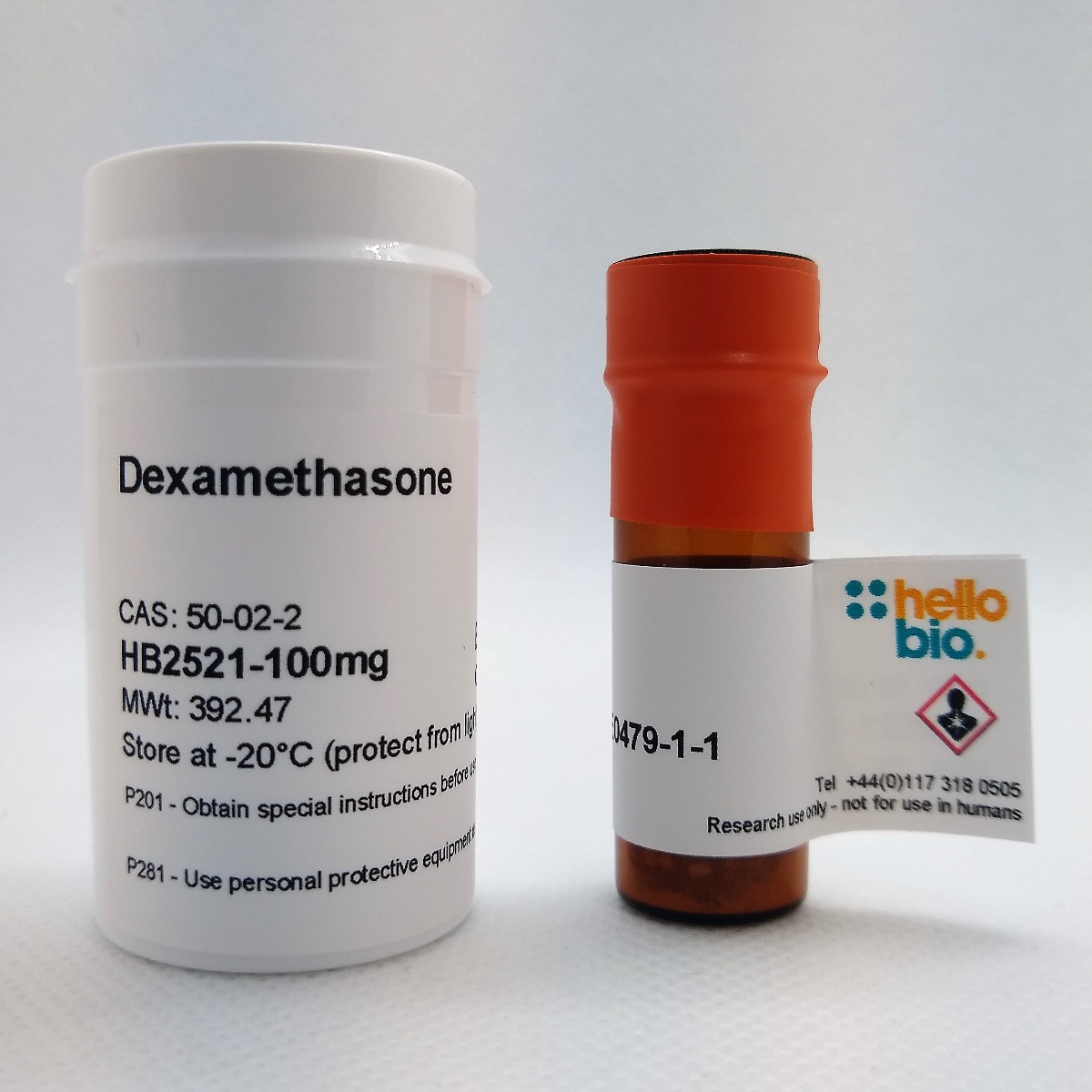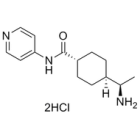The store will not work correctly when cookies are disabled.
JavaScript seems to be disabled in your browser. For the best experience on our site, be sure to turn on Javascript in your browser.
Images Dexamethasone product vial image | Hello Bio
Dexamethasone product vial image | Hello Bio Biological Data Biological description Synthetic glucocorticoid. Differentiates mesenchymal stem cells (MSCs) into adipogenic, chondrogenic and osteogenic lineages.
Commonly used with ascorbic acid and β-Gly for osteogenic differentiation of stem cells.
Also shows potent anti-inflammatory and immunospressant effects. Active in vivo .
Recently investigated as part of COVID-19 compound repurposing.
Apoptosis inducer.
Water soluble dexamethasone also available.
Solubility & Handling Solubility overview Soluble in DSMO (100mM)
Storage instructions -20°C (protect from light)
Storage of solutions Prepare and use solutions on the same day if possible. Store solutions at -20°C for up to one month if storage is required. Equilibrate to RT and ensure the solution is precipitate free before use.
Shipping Conditions Stable for ambient temperature shipping. Follow storage instructions on receipt.
Important This product is for RESEARCH USE ONLY and is not intended for therapeutic or diagnostic use. Not for human or veterinary use.
Chemical Data Chemical name (11β,16α)-9-Fluoro-11,17,21-trihydroxy-16-methyl-pregna-1,4-diene-3,20-dione
Chemical structure
Molecular Formula C22 H29 FO5
SMILES C[C@@H]1C[C@H]2[C@@H]3CCC4=CC(=O)C=C[C@@]4([C@]3([C@H](C[C@@]2([C@]1(C(=O)CO)O)C)O)F)C
InChi InChI=1S/C22H29FO5/c1-12-8-16-15-5-4-13-9-14(25)6-7-19(13,2)21(15,23)17(26)10-20(16,3)22(12,28)18(27)11-24/h6-7,9,12,15-17,24,26,28H,4-5,8,10-11H2,1-3H3/t12-,15+,16+,17+,19+,20+,21+,22+/m1/s1
InChiKey UREBDLICKHMUKA-CXSFZGCWSA-N
References for Dexamethasone References are publications that support the biological activity of the product
Dexamethasone alleviates tumor-associated brain damage and angiogenesis. Fan Z et al (2014) PLoS One 9(4) : e93264. Short bouts of mechanical loading are as effective as dexamethasone at inducing matrix production by human bone marrow mesenchymal stem cell. Sittichokechaiwut A et al (2010) Eur Cell Mater 20 : 45-57. Glucocorticoid receptor antagonism by cyproterone acetate and RU486. Honer C et al (2003) Mol Pharmacol 63(5) : 1012-20.
Publications
These publications cite the use of Dexamethasone purchased from Hello Bio:
Chronic intermittent ethanol exposure disrupts stress-related tripartite communication to impact affect-related behavioral selection in male rats. Munier JJ et al (2023) Neurobiology of stress 24 : 100539
Tell us about your publication! What Hello Bio product(s) have you cited?
Captcha Please type the letters and numbers below Submit
Anti-inflammatory synthetic glucocorticoid. Induces hMSC differentiation. Apoptosis inducer.
![Dexamethasone [50-02-2] Dexamethasone [50-02-2] Chemical Structure](https://cdn.hellobio.com/media/catalog/product//h/b/hb2521.png)






 Understanding purity and quality - a guide for life scientists
Understanding purity and quality - a guide for life scientists
